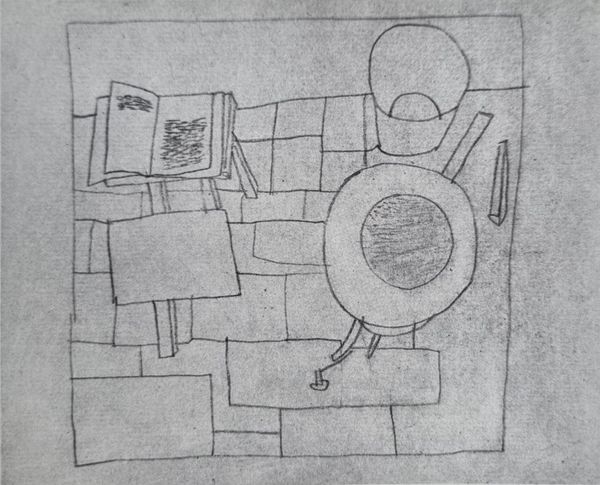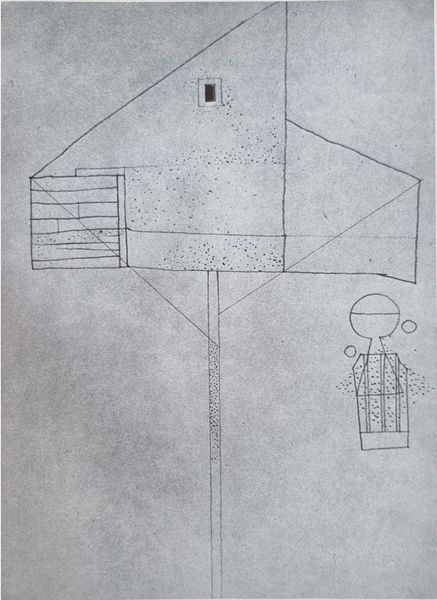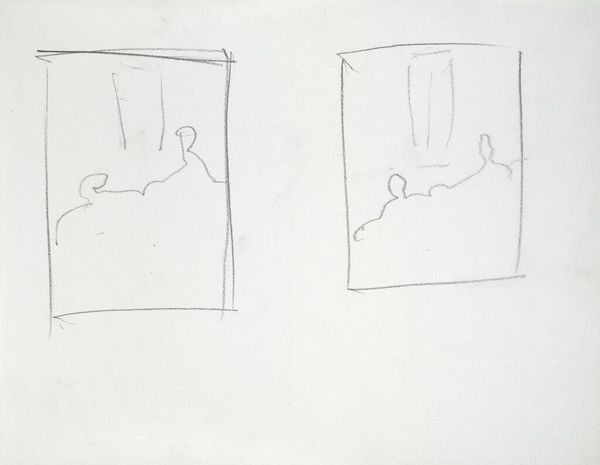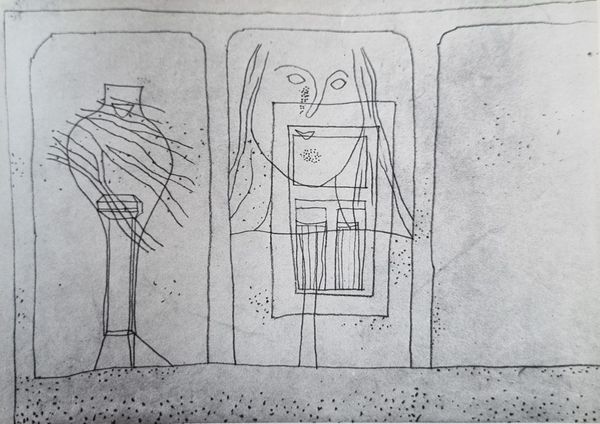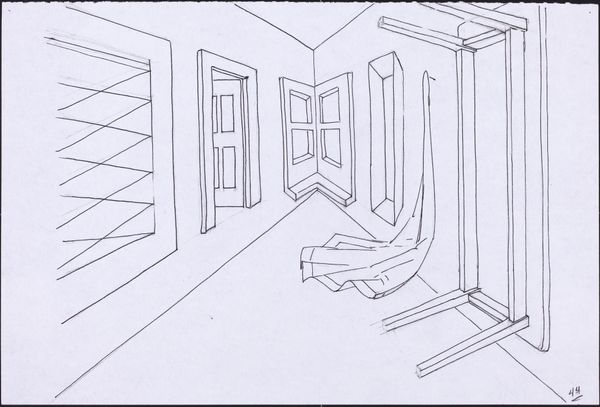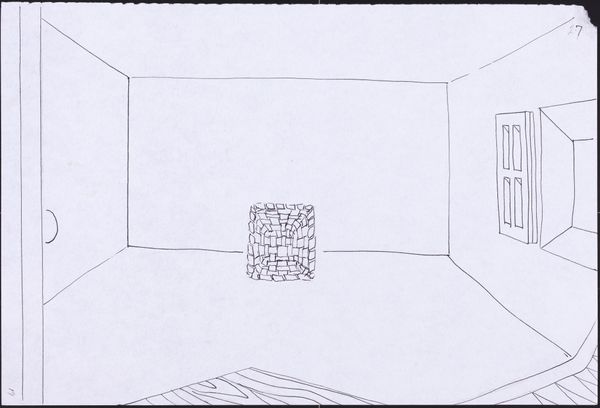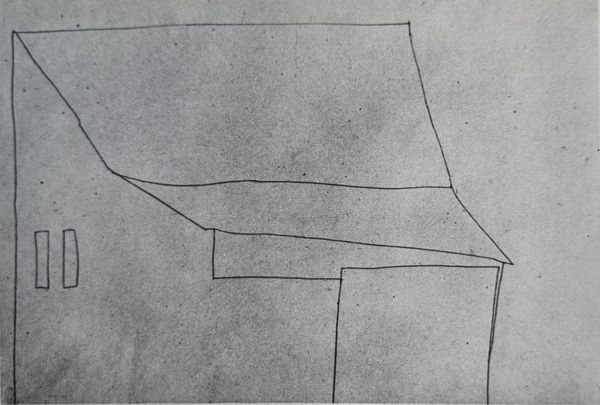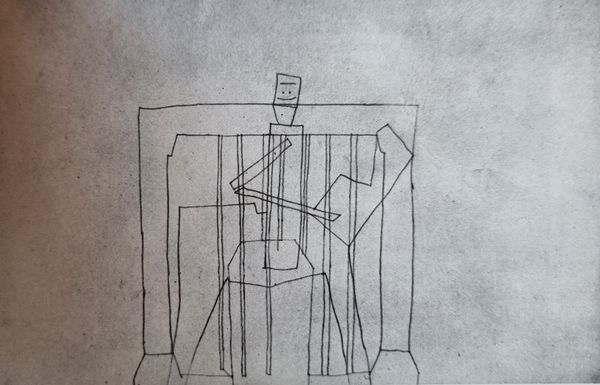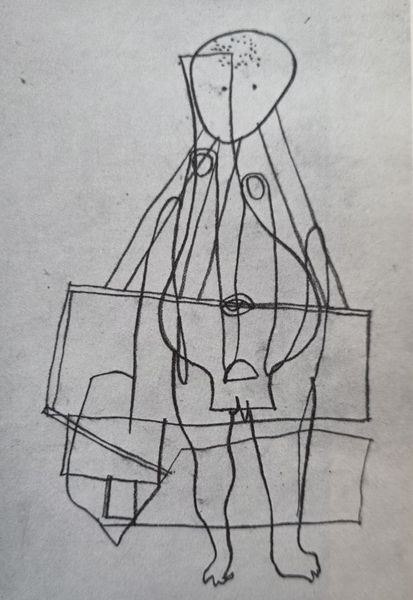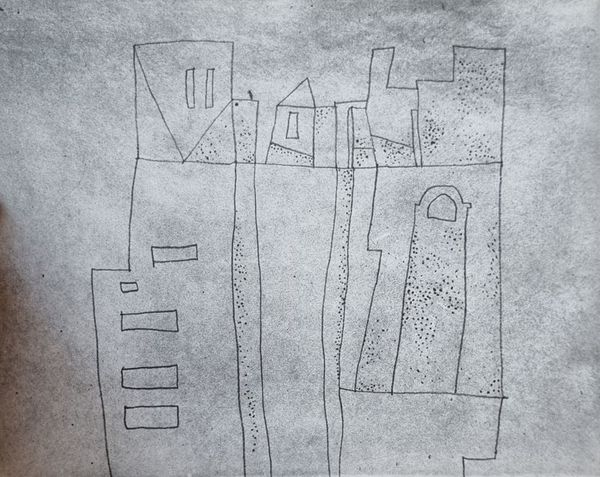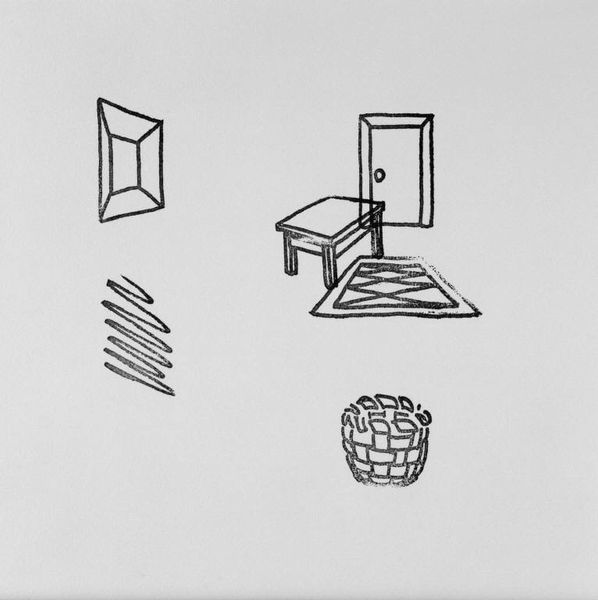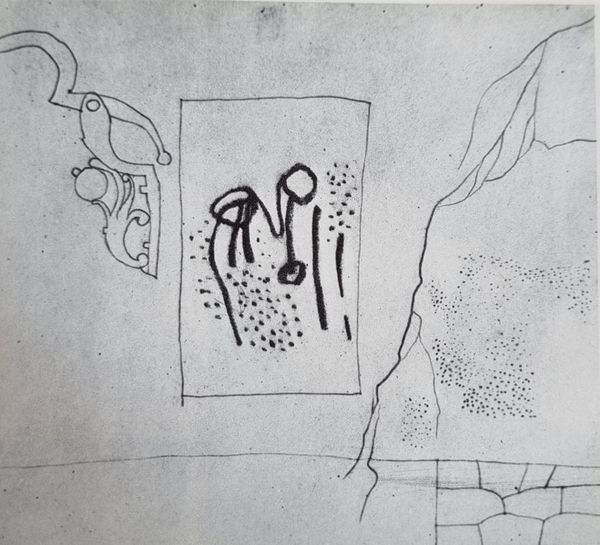
drawing, paper, ink
#
drawing
#
light pencil work
#
quirky sketch
#
shading to add clarity
#
incomplete sketchy
#
paper
#
personal sketchbook
#
ink
#
idea generation sketch
#
geometric
#
abstraction
#
line
#
sketchbook drawing
#
quick sketch
#
sketchbook art
#
modernism
#
initial sketch
Copyright: Public domain
Editor: So, this is Vajda Lajos's "Madárház 1936", ink and pencil on paper. It strikes me as…deliberately simplistic, almost childlike in its depiction of forms, and that central figure gives me a distinct feeling of isolation. What do you see in this piece? Curator: Isolation is a powerful reading. This piece, beyond its deceptively simple rendering, invites us to consider the socio-political climate of 1930s Hungary, deeply fractured by rising fascism and social unrest. The stark geometric shapes could be read as representing a fragmented society, and that 'birdhouse,' or even the stick figure, could symbolize individuals trapped within oppressive structures. Editor: Trapped? That’s interesting. I was focused more on the kind of naive quality of the drawing style, like it was referencing outsider art traditions almost. Curator: It's easy to get hung up on his style – Lajos's artistic project evolved radically, embracing both avant-garde and what you might call folk traditions. He was wrestling with questions of national identity and belonging, but he was doing so from a deeply critical perspective. Is he using simple forms to reach back to something pure, or to critique the limitations imposed on him by this culture? Editor: So, the simplicity might be a form of resistance, a way of critiquing dominant ideologies? Curator: Exactly. Think about who had the right to expression and visibility during that time, and whose voices were marginalized or erased. Artists like Vajda often employed abstraction and seemingly 'naive' forms as a subtle but potent form of dissent. He gives form to this complex identity, one informed by imposed limitations, both politically and culturally. Editor: Wow, I never thought of it that way. I guess there's a lot more happening beneath the surface than I initially realized. This helps me realize the art has more depth and makes me want to read more about it. Curator: Absolutely! That's the beauty of art; it’s a mirror reflecting the complexities of the world.
Comments
No comments
Be the first to comment and join the conversation on the ultimate creative platform.
